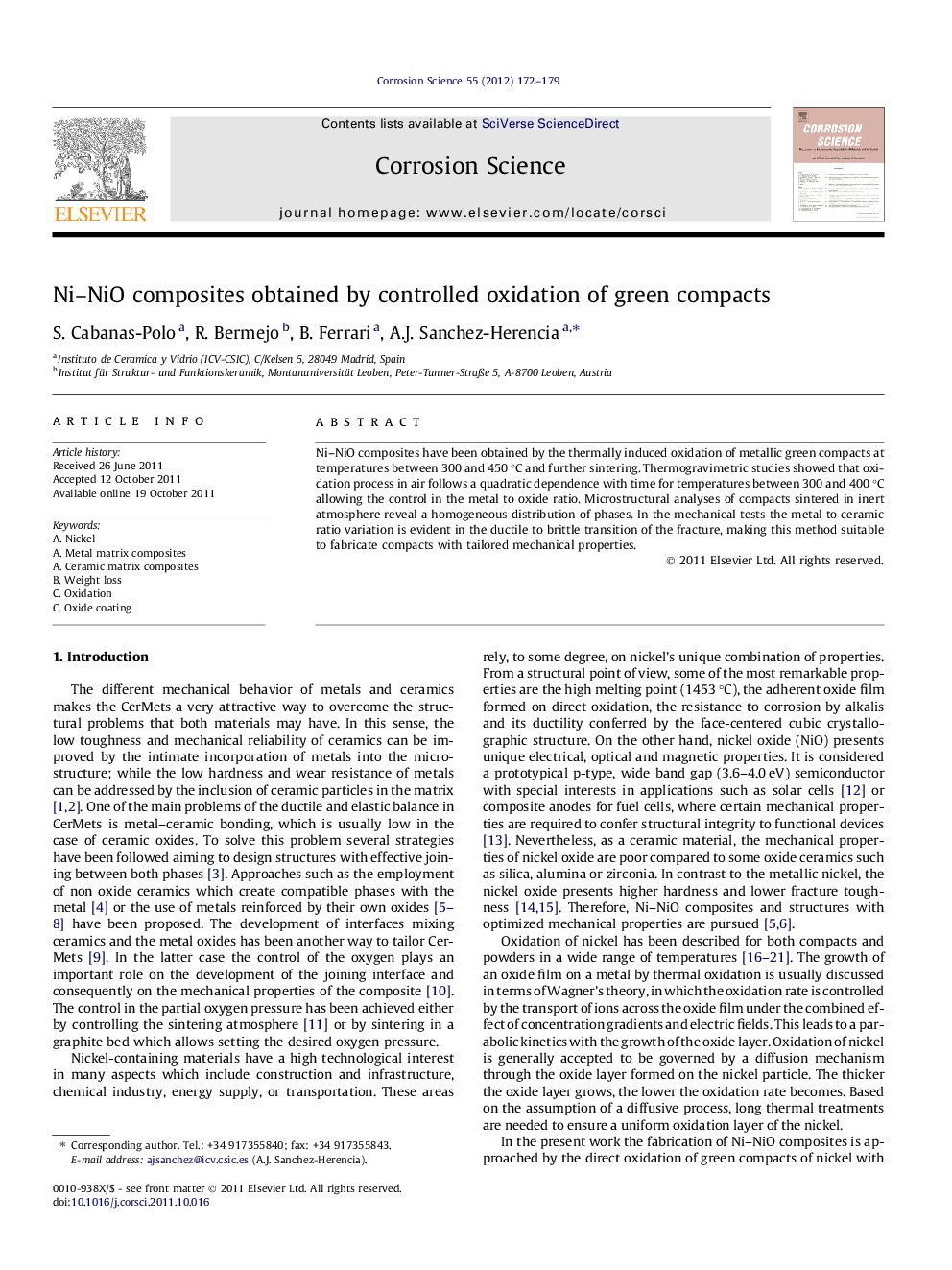| Article ID | Journal | Published Year | Pages | File Type |
|---|---|---|---|---|
| 1469913 | Corrosion Science | 2012 | 8 Pages |
Ni–NiO composites have been obtained by the thermally induced oxidation of metallic green compacts at temperatures between 300 and 450 °C and further sintering. Thermogravimetric studies showed that oxidation process in air follows a quadratic dependence with time for temperatures between 300 and 400 °C allowing the control in the metal to oxide ratio. Microstructural analyses of compacts sintered in inert atmosphere reveal a homogeneous distribution of phases. In the mechanical tests the metal to ceramic ratio variation is evident in the ductile to brittle transition of the fracture, making this method suitable to fabricate compacts with tailored mechanical properties.
Graphical abstractFigure optionsDownload full-size imageDownload as PowerPoint slideHighlights► Variable Ni–NiO ratio composites are formed by direct thermal oxidation of porous green nickel samples. ► A very high dispersion of ceramic and metallic phases is achieved in pretreated compacts after sintering. ► The metallic-ductile to ceramic-brittle transition is revealed in the indentation and bending test. ► Mechanical response of compacts can be substantially modified and controlled by the one-step low temperature treatment.
